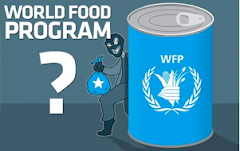
By GATONYE GATHURA and DANIEL NYASSYPosted Monday, October 12 2009 at 22:00
Maize suspected to be contaminated with aflatoxins could be circulating in parts of Garissa and Mwingi districts, according to relief aid agencies.
The approximately 238 bags of highly toxic maize are said to have disappeared from stores at the Bura Irrigation and Settlement Scheme.
Another larger consignment from the Bura scheme has been tested and found to contain extremely high levels of aflatoxins that could endanger health.
According to a source within the aid agencies, but who wished to remain anonymous, in September the World Food Programme (WFP) had applied to buy 48 metric tonnes of maize from a group of farmers at the irrigation scheme.
According to the sale agreement, WFP would only buy the maize after testing it for contamination. Samples from 975 bags were sent for lab analysis both in Mombasa and The Netherlands.
The tests, sources say, found the maize to be highly contaminated with aflatoxins, many times over what is considered safe for both humans and livestock.
The maize was found to contain toxin levels of between 890 and 3,800 parts per billion. WFP accepts maize that has no more than 10 parts of aflatoxin per billion while the Kenya government accepts no more than 20 parts per billion.
WFP is said to have offered to replace the 975 bags the Bura farmers had collected and recommended that the bad maize be destroyed. It has since been stored by ministry of Public Health and Sanitation.
Mr Gitonga Mugambi, a chief irrigation officer with the National Irrigation Board, yesterday said the board was doing its own tests and had taken samples to the Kenya Bureau of Standards while the ministry of Public Health had taken samples to the Government Chemist for analysis.
“If the maize is confirmed to be contaminated the necessary steps will be taken to destroy the consignment,” he said.
However, the farmers had also collected another 238 bags which the WFP could not consider buying because they came too late when the fate of the other bags had been decided.
Because this maize had been grown, harvested, dried and stored under similar conditions with the earlier batch, it was also suspected to be contaminated.
It is these 238 bags aid agencies fear have been released to farmers and sold to traders in Garissa and Mwingi.
However, Mr Mugambi says he is not aware of this development, recommending that the only people who can trace the suspect maize are public health officials.
High levels of aflatoxins can trigger a disease outbreak as happened in 2004 and 2005, when 395 cases of severe aflatoxin poisoning were reported, resulting in 157 deaths in Makueni.
The red flag over contaminated maize in the area was raised last October by researchers from the Kenya Medical Research Institute and the US Centres for Disease Control and Prevention.
Research shows most residents are exposed to chronic low-level aflatoxins, which increase risks of liver cancer, impaired immune function and malnutrition. Acute high-level exposure, which is less common, causes early symptoms of diminished appetite, malaise, and low fever. Later symptoms, including vomiting, abdominal pain, and hepatitis, signal potentially fatal liver failure.
Writing in the East African Medical Journal, the researchers concluded that the cause of high levels of aflatoxin in maize in Makueni and neighbouring districts was poor handling during harvesting, drying and storage of local produce.
Almost 80 per cent of maize in the area, the researchers said, is stored in plastic bags, which are known to retain moisture and promote aflatoxin contamination.
Spreading maize on the ground to dry increases its contact with the soil, where the aflatoxin-producing fungus resides.
Our two-day investigations in Bura over the weekend revealed that farmers do not believe the maize is toxic and are accusing WFP of an underhand deal to deny them cash for their produce.
The manager of Bura Irrigation and Settlement Scheme, Mr Ben Masawe, declined to comment on the issue, terming it as “very sensitive”. The matter has been handed over to the police after the blame game went on for three months with numerous meetings bearing no fruit.
But the 90 farmers say they lost more than Sh12 million in the deal with WFP.
Mzee Magiri Manene, the treasurer of the farmers’ cooperative, said they were selling their maize to the local market at Sh2,000 per bag when WFP convinced them that it would buy their crop at a better price of Sh2,600 per bag.
“WFP supervised the growing of the crop all the way to harvesting and storage. All along they confirmed that our maize was perfect.
“We stored it under their supervision in the godown and used their preservative chemicals. Later they even put it in WFP branded bags. How did the maize suddenly turn toxic?” he posed.
“What surprised us even more is that WFP brought 1,000 bags of worse maize claiming they were compensating us. This maize is old and mixed with other grains and cannot even be sold.”
Service loan
The chairperson Ms Rose Atieno says: “If they wanted to compensate us, why didn’t they give us money? We agreed they would pay us money for our maize, not maize.”
Farmers cannot service a Sh12 million Equity Bank loan which they hoped to pay after the WFP deal, she said.
Of the 238 bags of disappeared maize, Ms Atieno said farmers went to the cooperative officials and demanded it back.
“The farmers took their maize away and sold it or consumed it in their homes,” she said and asked why no one died from eating this maize if indeed it was toxic.




No comments:
Post a Comment